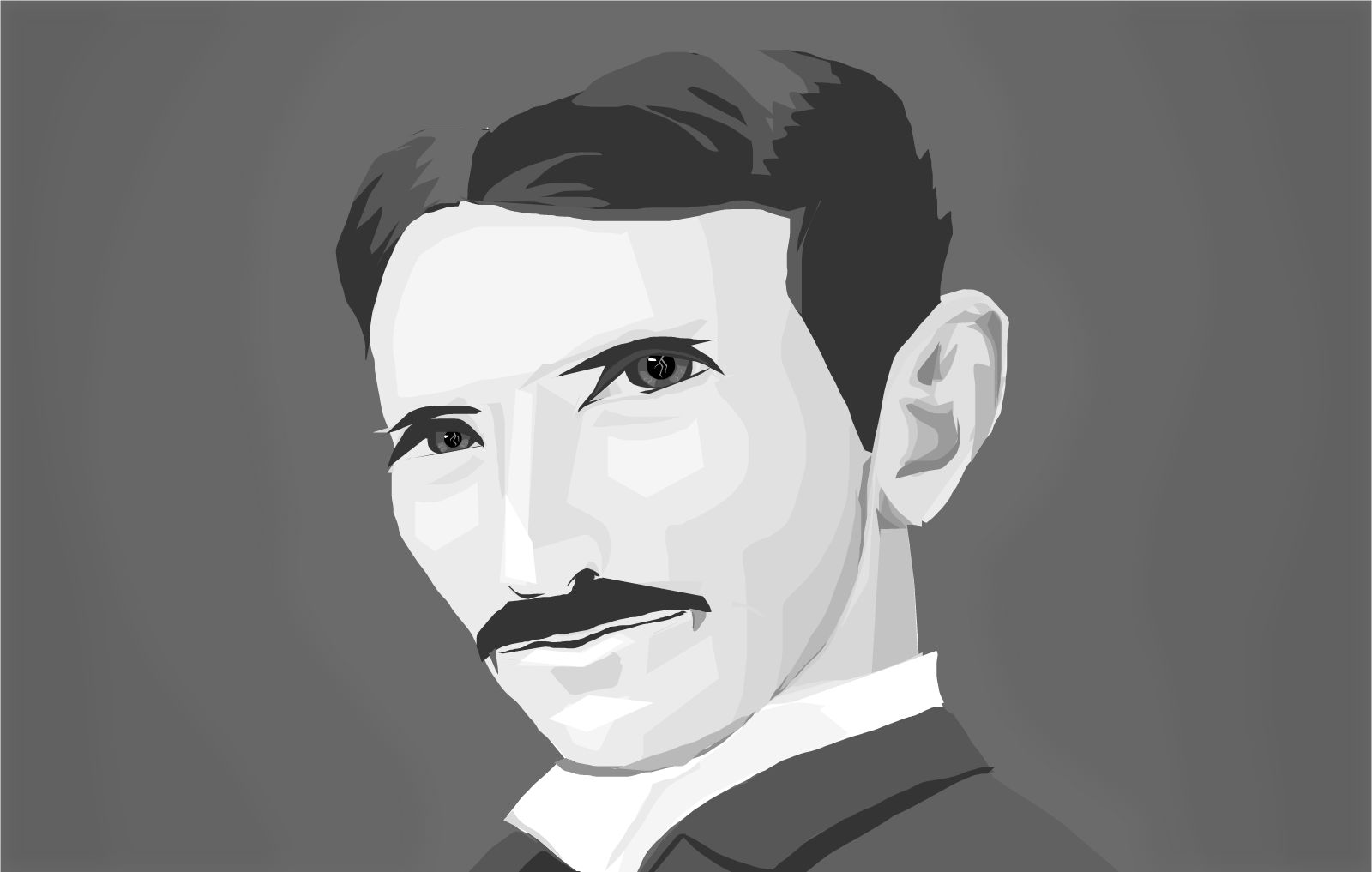
The world of innovation is often painted with strokes of genius and monumental success, conjuring images of visionary inventors basking in the glory of their groundbreaking creations and the immense wealth that often follows. Yet, beneath this glittering surface lies a stark reality for many brilliant minds: a path paved with ingenuity but devoid of financial reward. For some, the journey of innovation leads to global impact without ever filling their personal coffers.
This paradox is a recurring theme in history, where individuals whose inventions have profoundly reshaped human civilization found themselves on the periphery of commercial success. From revolutionary communication tools to everyday essentials, their contributions became cornerstones of modern life, even as fortunes eluded them. Their stories offer a crucial perspective on the complex interplay between creativity, intellectual property, corporate power, and sometimes, personal choices or unfortunate circumstances that dramatically alter financial outcomes.
In this insightful exploration, we delve into the lives of 15 extraordinary inventors who, despite their world-changing patents and creations, never truly reaped the financial benefits their genius deserved. Their narratives are a testament to the fact that while innovation can transform the world and generate billions for industries, it doesn’t always guarantee a gilded future for its originators. We begin our journey by examining the first seven of these remarkable individuals, shedding light on the intricate paths that led them to leave an indelible mark on humanity, often at a significant personal cost.

1. **Nikola Tesla**
The name Nikola Tesla often evokes images of an “electric wizard,” a man whose unparalleled brilliance quite literally illuminated the world. His alternating current (AC) system stands as a monumental achievement, fundamentally revolutionizing how electricity is generated, transmitted, and consumed across vast distances. Today, AC powers countless homes and businesses across the globe, a ubiquitous standard thanks to Tesla’s pioneering work that reshaped industrial and domestic life.
However, despite this incredible and enduring legacy, Tesla’s personal financial story was one of profound tragedy. He died nearly penniless in a New York hotel room in 1943, a stark contrast to the immense value his inventions had created. His financial misfortunes were a poignant counterpoint to his scientific triumphs, illustrating the bittersweet irony that sometimes accompanies groundbreaking innovation.
Early in his career, Tesla made crucial decisions that would define his economic future. He sold his AC motor patents to George Westinghouse, a visionary industrialist who recognized the immense potential of Tesla’s designs. While this transaction secured the immediate adoption and development of his technology, Tesla later tore up a royalty contract he had with Westinghouse that would have made him incredibly wealthy. His motivations are often seen as prioritizing the widespread societal benefit of his inventions over personal enrichment.
By the time of his death, the man who had fundamentally shaped the modern electrical grid and contributed so much to global progress was living on small handouts. These came from former business associates, offering a truly somber reflection of the vast chasm between his world-changing contributions and his personal financial reality. Tesla’s story serves as a poignant reminder that revolutionary ideas, no matter how profound, do not always translate into personal economic prosperity.
Read more about: Beyond the Red Carpet: Unpacking Celebrity Endorsements in the Automotive Industry and the Brands Forging Their Own Path

2. **Philo Farnsworth**
Imagine a world without television – the daily ritual of binge-watching favorite shows, the instant access to news, sports, and entertainment. This reality, so fundamental to modern life, exists largely due to the extraordinary ingenuity of Philo Farnsworth. At the astonishingly young age of 21, he invented electronic television, laying the foundational groundwork for an industry that would eventually transform human communication and entertainment on a global scale.
Despite holding the fundamental patents that underpinned this revolutionary technology, Farnsworth found himself embroiled in a lengthy and arduous legal battle. His adversary was none other than RCA, the colossal Radio Corporation of America. RCA, with its immense corporate might and seemingly endless resources, essentially used its power to steamroll the young and less-resourced inventor, relentlessly challenging his claims at every turn and attempting to invalidate his crucial patents.
The outcome of this protracted legal struggle was a bitter irony that saw one party amass billions while the other received a pittance. While RCA proceeded to make vast fortunes from the burgeoning television industry, solidifying its position as a telecommunications giant, Farnsworth himself received a disproportionately meager return. For his life’s work, the visionary inventor was ultimately awarded a mere one-time payment of $1 million.
This singular, non-recurring payment meant Farnsworth tragically missed out on decades of potential royalties from an invention that would go on to shape cultural landscapes, influence public opinion, and drive economies for generations. His story is a powerful illustration of how even the most brilliant individual innovation can be overshadowed and financially compromised when confronted by the overwhelming force of corporate legal and financial machinery, highlighting a significant imbalance of power.
Read more about: From Record-Breakers to Shocking Upsets: 13 Must-Know Moments and Winners from the 2025 Emmy Awards!

3. **Johannes Gutenberg**
The printing press, with its revolutionary movable type printing, irrevocably changed the course of history by dramatically increasing literacy rates and democratizing the spread of information across Europe. Before Gutenberg’s invention in the 1440s, books were painstakingly copied by hand, making them incredibly rare, expensive, and largely inaccessible to the common person. His innovation sparked nothing less than a printing revolution, laying the indispensable foundation for modern mass communication.
However, the visionary behind this monumental shift, Johannes Gutenberg, did not, unfortunately, reap the financial rewards one might expect from such an impactful creation. His entrepreneurial journey was fraught with severe business challenges and profound legal misfortunes that ultimately cost him dearly. His ambition to commercialize his press led him into partnerships that would prove to be his undoing.
He was famously sued by a business partner, Johann Fust, a legal dispute that centered on the financing and profits of their joint printing venture. This lawsuit proved catastrophic for Gutenberg’s burgeoning enterprise, as the courts ruled against him. As a direct consequence, Gutenberg lost both his printing shop and, crucially, complete control of his groundbreaking invention, seeing others benefit from his genius.
In a final, poignant twist to his story, Gutenberg spent his final years in relative poverty and obscurity. He subsisted on a modest stipend, essentially a charity payment, provided by the Archbishop of Mainz. The man who gave the world mass production of books, fostering education and enlightenment on an unprecedented scale, died broke, a stark testament to the precarious nature of entrepreneurial ventures, even those of epoch-making significance.

4. **John Walker**
Imagine a world without matches, where the simple act of starting a fire was a cumbersome, time-consuming, and often difficult task. British chemist John Walker stumbled upon the elegant solution to this ancient problem in 1826, creating what would become known as the first friction match. His discovery was, quite literally, an accident of remarkable significance, occurring while stirring a mixture that ignited when scraped.
Walker’s initial invention involved carefully prepared cardboard strips coated with sulfur and dipped into a highly flammable concoction. He aptly named these ingenious devices “friction lights,” and they rapidly gained local popularity, offering an unprecedented level of convenience for igniting fires. His idea fundamentally revolutionized the portability and immediate application of fire, making it readily accessible to anyone.
Despite the clear commercial potential and the wise advice he received to protect his innovation through patenting, Walker made a fateful decision: he steadfastly refused to patent his invention. His motivations are often attributed to a noble belief that his creation should be a public good, freely benefiting humanity without being restricted by proprietary claims or exclusive ownership.
This altruistic stance, however, had significant and lasting financial repercussions for him. His refusal to patent effectively opened the floodgates for others to capitalize on his genius. Competitors quickly emerged, modifying and patenting similar designs, like Samuel Jones’ “Lucifers” in 1829. Within just a few decades, matchmaking transformed into a thriving industry across England, yet John Walker, the true originator, never earned a penny from his world-changing creation.
Read more about: When Reality Bites: 14 Unforgettable Action Moments Where Actors Weren’t Just Acting – Their Pain Was Absolutely Genuine

5. **Tim Berners-Lee**
The internet, as we navigate it today—a vast, intricate, and interconnected web of information and communication—is almost unimaginable without the foundational and visionary work of Tim Berners-Lee. While working at CERN in 1989, he conceived and invented the World Wide Web, creating the essential protocols and standards that enable us to access and share information seamlessly across the globe. His ingenious vision transformed early, disparate computer networks into a unified, universally accessible platform.
Crucially, Berners-Lee made a conscious and profoundly deliberate decision that not only defined the web’s future trajectory but, concurrently, his own financial path. Rather than pursuing patents for his creation and seeking immense personal gain, he intentionally released the entire source code for free. This was not merely an oversight but a deep-seated philosophical conviction on his part.
He firmly believed that the web should serve as an open platform, a global commons, universally accessible to everyone without proprietary barriers. His goal was to foster unprecedented global collaboration and innovation, unhindered by licensing fees or exclusive ownership. This altruistic commitment positioned the web as a public good, rather than a commercial commodity from its inception.
This singular decision had truly monumental consequences for humanity. It unleashed an explosion of innovation and connectivity, allowing countless individuals, businesses, and organizations to build upon his framework, creating trillions in economic value and new industries. Yet, precisely because of his unwavering commitment to an open and free web, Berners-Lee never directly profited from his invention in a financial sense, while others built vast empires on his generous foundation.
Read more about: Beyond the Leg Warmers: 14 Defining Moments of the 80s That Still Resonate Today

6. **Ron Klein**
Every time a credit card is swiped, tapped, or inserted into a payment terminal, the underlying technology enabling that transaction owes a profound debt to the innovative mind of Ron Klein. Often hailed as the ‘grandfather of possibilities,’ Klein invented the magnetic strip technology for credit cards in 1968, a seemingly simple yet incredibly powerful solution that would revolutionize global finance. His foresight addressed a critical need in the nascent credit card industry.
Before Klein’s groundbreaking invention, credit card transactions were a significantly more cumbersome, slower, and less secure affair, often relying heavily on manual verification processes that were prone to errors and delays. The magnetic strip provided an elegant, quick, efficient, and highly reliable method to securely store and retrieve cardholder information electronically, fundamentally transforming the banking and retail industries across the world.
This innovation rapidly became the indispensable backbone of global commerce for many decades, facilitating billions of secure transactions annually and enabling the rapid expansion of credit-based economies. The magnetic strip allowed for instant electronic verification, dramatically speeding up checkout lines and making credit card usage a seamless part of daily life for millions. Its widespread adoption underscored its critical importance.
Despite the monumental impact and commercial ubiquity of his invention, Ron Klein did not personally profit from the magnetic strip technology in any significant way. The reason for this unfortunate financial outcome was simple yet legally profound: he developed the technology while he was employed by a bank. Under the prevailing intellectual property laws and standard employment agreements of the time, his employer automatically owned the intellectual property rights to his innovation, meaning he received no direct personal financial compensation or royalties.
Read more about: The Final Bell: Honoring 12 Unforgettable ‘Rocky’ Actors We’ve Sadly Lost

7. **Shane Chen**
The sight of hoverboards gliding effortlessly down sidewalks became a familiar and exciting spectacle in the mid-2010s, capturing the imagination of many as a futuristic and fun mode of personal transportation. Behind this popular phenomenon was Shane Chen, the innovative inventor who patented his self-balancing scooter in 2013. His invention promised a new era of urban mobility, ingeniously blending recreational fun with practical portability in a compact and intuitive device.
However, Chen’s entrepreneurial dream of establishing his brand and justly reaping the financial rewards of his ingenuity was quickly and dramatically undermined. Before he could firmly establish his market presence, the global marketplace was inundated with a torrent of knockoffs. Unscrupulous Chinese manufacturers, often operating outside the constraints of international patent law, rapidly produced and distributed counterfeit versions of his invention at a fraction of the cost.
Chen’s company, Inventist, found itself in an unenviable and financially crippling position. It was forced to spend exorbitant amounts of money and precious resources fighting protracted legal battles against these relentless and numerous counterfeiters, desperately trying to protect its intellectual property. These continuous legal struggles became a severe financial drain, significantly outweighing any profits the company managed to generate from legitimate sales.
What should have been a groundbreaking personal transportation revolution for Shane Chen ultimately turned into a profound financial disappointment and a cautionary tale. The widespread proliferation of unauthorized copies not only diluted his market share and brand recognition but also critically eroded his ability to capitalize on his own patented invention, illustrating the immense challenges inventors face in a globalized retail environment.
Our journey through the often-unrewarded landscape of groundbreaking innovation continues, revealing more extraordinary minds whose visions reshaped industries and daily life, yet who personally struggled to secure the financial returns their genius merited. These stories further illuminate the intricate, often challenging, intersection of creativity, intellectual property, and commercial success, reminding us that an impactful idea doesn’t always guarantee a gilded future for its originator. We delve into eight additional narratives, each a powerful testament to the multifaceted reasons why inventors can lose out on their rightful fortunes.
Read more about: Unveiling Hidden Fortunes: The Unexpected Millionaires Redefining Home in America’s Trailer Parks

8. **Douglas Engelbart**
The computer mouse is an invention so ubiquitous, so seamlessly integrated into our digital lives, that it’s easy to overlook its revolutionary impact. It sits beside nearly every computer in the world, the silent facilitator of countless interactions, from casual browsing to complex design. Yet, the brilliant mind behind this fundamental device, Douglas Engelbart, saw barely a dollar from his world-changing creation after its initial demonstration in 1968.
Engelbart’s patent for the mouse, a device that fundamentally transformed how humans interact with computers, expired in 1987. This timing proved to be a cruel twist of fate. It was precisely at this moment that personal computers began their explosive ascent into household staples, transitioning from niche technology to mainstream necessity. Just as the market for his invention was reaching its peak, his intellectual property protection vanished.
The technology was eventually licensed to Apple for a mere $40,000, an astonishingly low sum considering the multi-billion dollar industry it would help create. What’s more, none of this modest payment went directly to Engelbart himself. The financial rewards, the vast fortunes generated by an entirely new paradigm of computing, flowed almost exclusively to the companies that commercialized his vision, rather than to the visionary who conceived it. It serves as a stark lesson in the critical importance of patent longevity in a rapidly evolving technological landscape.

9. **Daisuke Inoue**
For billions worldwide, the karaoke machine represents pure, unadulterated fun, a beloved staple of social gatherings and a multi-billion dollar industry that brings people together through song. Yet, the Japanese musician Daisuke Inoue, credited with building the very first karaoke machine in 1971, never received a single royalty from his ingenious invention. His story is a poignant reminder that not all brilliance translates into business acumen.
The genesis of the karaoke machine was remarkably organic. Inoue was a band member playing in Kobe’s bars and clubs, often encouraging jovial customers to sing along. When invited to provide entertainment for a steel company president’s weekend trip and unable to attend, he devised an acceptable substitute: he recorded his music on tape. This simple solution was a hit, sparking the idea for machines fitted with tapes and amplifiers, allowing people to select and sing along to their favorite songs.
Inoue began renting these machines to local bars, where they quickly gained popularity. Despite their clear commercial appeal and rapid adoption, he famously never thought to patent his invention. His perspective, looking back, was disarmingly modest: “I’m not an inventor. I simply put things that already exist together, which is completely different. I took a car stereo, a coin box, and a small amp to make the karaoke. Who would even consider patenting something like that?”
While his contribution to humanity was allowing people to sing, often badly, in public, his lack of patent protection meant his contribution to his own bank account was negligible. Others quickly developed and marketed similar machines globally, capitalizing on a cultural phenomenon without the need to compensate its true originator. It underscores how critical it is for creators to understand and protect their intellectual property, no matter how humble they perceive their innovation to be.

10. **Stephen Wozniak**
As the co-founder of Apple, Stephen Wozniak’s name is synonymous with the dawn of the personal computing revolution. His engineering brilliance designed the Apple I and Apple II computers, machines that weren’t just innovative but fundamentally launched an entire industry, bringing powerful technology into homes and businesses worldwide. While his contributions were undeniably monumental, his financial rewards were a mere fraction of what they could have been, especially when compared to his legendary co-founder, Steve Jobs.
Wozniak did receive some financial remuneration from Apple’s initial public offering, a testament to his foundational role in the company’s early success. However, his early departure from the day-to-day operations of Apple, combined with his exceptionally generous nature, significantly impacted his long-term wealth. Famously, he gave away much of his stock to early employees, believing in fairness and sharing the success with those who contributed to the journey.
This decision, while admirable and earning him immense respect, meant he missed out on billions as Apple scaled to become one of the world’s most valuable companies. Unlike some of his peers, Wozniak consistently prioritized engineering excellence, user experience, and a sense of fairness over aggressive financial gain. His values shaped the company’s early ethos and his personal financial trajectory.
Ultimately, Stephen Wozniak’s story highlights a contrasting path to success within the tech industry. He became a revered figure, a legend among engineers and enthusiasts, but his decision-making and priorities meant he remained far less wealthy than his truly invaluable contributions warranted. It is a powerful narrative about personal values clashing with commercial realities in the high-stakes world of innovation.

11. **Alexey Pajitnov**
Tetris is more than just a video game; it’s a global cultural phenomenon, having sold hundreds of millions of copies across virtually every gaming platform since its inception. Its simple yet addictive gameplay has captivated generations. However, its brilliant creator, Alexey Pajitnov, initially received no royalties whatsoever from his iconic invention for an entire decade after its creation. This unusual situation offers a fascinating glimpse into intellectual property rights under a different economic system.
Pajitnov created Tetris in 1984 while working at a Soviet computer center. Under the prevailing laws of the Soviet Union, intellectual property rights, including those for his groundbreaking game, belonged entirely to the state. This meant that for ten years, as Tetris exploded in popularity across the globe, the Soviet government collected all the lucrative royalties generated by the game. Pajitnov, the creative genius behind it all, received only his modest government salary.
It wasn’t until 1996, a full decade after Tetris had already become a global sensation and generated billions in revenue for others, that Alexey Pajitnov finally founded The Tetris Company. Only then did he begin to receive direct compensation for his incredible creation. This protracted delay in receiving financial recognition for his life’s work underscores the profound challenges inventors can face when operating within state-controlled economies, where individual ownership is subservient to collective or governmental claims.
His story serves as a unique case study in the complexities of intellectual property across different political and economic systems, demonstrating how an inventor’s financial fate can be irrevocably tied to the geopolitical landscape of their time. It’s a compelling narrative of delayed justice and the eventual, albeit late, recognition of a singular creative force.
Read more about: The Ultimate Journey Through the Top 13 Games Ever: A Extravaganza
12. **Gordon Gould**
The term ‘laser’ has become commonplace, describing a technology fundamental to everything from cutting steel and performing delicate surgery to reading digital media. This ubiquitous technology was first conceived in 1957 by Gordon Gould, a visionary who not only defined the concept but also coined its very name. Yet, a fateful delay in filing for patents immediately after his initial breakthrough plunged him into a legal quagmire that lasted for 30 years.
This critical oversight, the failure to secure timely patent protection, opened the door for others to patent similar laser technology, leading to decades of contentious and financially draining legal battles for Gould. He spent the prime years of his life fighting for recognition and ownership of his own invention, navigating a complex web of legal challenges against powerful corporate entities that had capitalized on the technology he originated.
Gould finally achieved a degree of success in the 1970s and 1980s, winning limited patent rights through persistent litigation. However, by the time these rights were secured, he had already missed out on decades of potential royalties from an invention that was rapidly transforming numerous industries and generating immense wealth for others. The belated legal victories, while validating his contributions, could not fully compensate for the lost opportunities and the personal toll of his arduous fight.
His story is a powerful cautionary tale about the immense importance of immediate and robust intellectual property protection. The technology he envisioned continues to drive innovation and create vast fortunes, making others wealthy, while its true originator spent much of his life battling in court for the recognition he deserved, leaving a lasting legacy marred by financial struggle.
Read more about: The King’s Highway: Charting Elvis Presley’s Revolutionary Ride Through Music History

13. **Mikhail Kalashnikov**
The AK-47 assault rifle is undeniably one of the most recognizable and widely produced weapons in human history, with over 100 million units manufactured globally. Its rugged simplicity, reliability, and low production cost have made it a ubiquitous tool in conflicts and military arsenals worldwide. Despite its unparalleled proliferation and the billions generated by its design, its inventor, Mikhail Kalashnikov, received virtually no personal compensation for creating such a profoundly impactful device.
Kalashnikov developed the iconic rifle in 1947 while serving as a Soviet military engineer. In the Soviet system, intellectual property created by state employees, particularly for military purposes, automatically belonged to the state. This meant that while arms manufacturers across the globe produced and profited immensely from his reliable and cost-effective rifle design, Kalashnikov himself lived on a modest military pension, residing in a small apartment throughout his life.
The vast chasm between the global impact and financial exploitation of his invention and his personal financial situation is stark. It perfectly illustrates the concept of state ownership overriding individual reward for innovation, particularly in strategic sectors like defense. Kalashnikov’s personal sentiments about his creation were complex and, towards the end of his life, tinged with regret.
Shortly before his death in 2013, he famously expressed sorrow that his engineering talent had been directed towards creating a weapon, rather than something beneficial for humanity, like a lawnmower. His story is a powerful testament to the differing ethical and financial landscapes inventors navigate, especially when their creations fall under the purview of national security and state control.
Read more about: Ukraine’s Latest Defense: Missile-Armed Crop Duster Takes Flight Against Drones

14. **Antonio Meucci**
Long before Alexander Graham Bell secured the official patent for the telephone in 1876, an Italian immigrant named Antonio Meucci had already developed a working voice communication device. Meucci’s ingenuity led him to create a device he called the “teletrofono” decades earlier, demonstrating its functionality and even filing a patent caveat – a preliminary patent application – in the early 1870s to protect his groundbreaking work.
However, Meucci’s journey was plagued by severe financial hardship, a tragically common theme among unrewarded innovators. This economic struggle ultimately prevented him from maintaining his patent caveat. Without the financial resources to renew this crucial preliminary protection, his claim to the invention lapsed, leaving the door open for others to step in and secure the full patent rights.
Despite years of legal challenges, during which Meucci attempted to assert his priority, and even posthumous recognition by the U.S. Congress in 2002 acknowledging his pioneering work in developing the telephone, he died penniless. His recognition came too late to alter his personal fortunes. Meanwhile, Alexander Graham Bell’s company, founded on a similar concept, blossomed into the telecommunications giant AT&T, accumulating vast wealth and global influence.
Meucci’s narrative serves as a heartbreaking example of how financial constraints and an inability to navigate the complex patent system can rob a true originator of their rightful legacy and fortune. It highlights the often-unseen struggles of inventors against not just competitors, but also the unforgiving realities of economic disparity and legal bureaucracy.

15. **Gregory Coleman**
In the realm of music, a seven-second drum break, known universally as the “Amen break,” has been dubbed by some as the most important seven seconds of music ever recorded. Its influence is staggering, boasting over 6,000 sampling credits in countless hit songs spanning hip hop, R&B, jungle, and drum and bass, generating millions of dollars in revenue across the global music industry. Yet, the man who created this iconic beat, Gregory “GC” Coleman, died penniless and homeless in Atlanta in 2006.
Gregory Coleman was the drummer for The Winstons in the late 1960s. He devised the iconic drum pattern for their 1969 track “Amen, Brother.” Ironically, this song was not even a major hit for the band; it was the B-side to their single “Color Him Father.” The drum solo was originally inserted simply to fill time, an ephemeral creative flourish that would unexpectedly become a foundational element of entire musical genres.
Beyond the modest royalties from The Winstons’ original song, Coleman never saw a single dime from the thousands of other tracks that sampled his seminal drum solo. His artistic creation, a moment of percussive genius, became an engine of immense commercial success for countless artists and record labels, but none of that wealth ever reached its originator.
Coleman’s story is a profoundly tragic illustration of how intellectual property rights can fail to protect creators in evolving artistic landscapes, especially when new technologies like sampling emerge. It poses a critical question about fair compensation in the digital age and the stark reality that foundational artistic contributions, no matter how influential, do not always guarantee financial security for their creators.
These narratives collectively paint a vivid, often somber, picture of the complex world of innovation. From the colossal power of corporations to the intricacies of international intellectual property law, and from personal altruism to sheer unfortunate timing, the reasons behind an inventor’s financial misfortune are as diverse as their brilliant ideas. Yet, a common thread weaves through each of these stories: the profound disconnect between world-changing ingenuity and personal financial gain.
Their legacies, though not measured in personal wealth, resonate in the technologies and conveniences that define our modern lives. These inventors may not have accumulated fortunes, but their impact is immeasurable, leaving an indelible mark on humanity that far transcends monetary value. Their tales serve as crucial lessons, reminding us that true innovation, while transformative, often comes at a steep personal price, challenging our perceptions of success and recognition in the annals of history.



